
Dust is a common household nuisance. It seems to appear out of nowhere, settling on surfaces and floating in the air.
Dust is most prevalent in high-traffic areas like living rooms, bedrooms, and hallways, where movement stirs up particles. It also accumulates on soft furnishings, carpets, and electronics, which attract dust due to static electricity. In poorly ventilated spaces, such as basements and storage rooms, dust settles quickly and lingers. Too much dust can cause allergies and make breathing problems worse. It also makes surfaces look dirty, so you have to clean often to keep the air in your home fresh.
But what if there was a way to reduce dust in your home?
Introducing the air purifier: the best solution for removing dust
Air purifiers have gained popularity for their ability to improve indoor air quality. They can remove a variety of pollutants, including dust.
They work by circulating air through filters that trap dust particles.
However, not all air purifiers are equally effective at dust removal. The type of filter, the size of the room, and the air purifier’s Clean Air Delivery Rate (CADR) all play a role.
What is Clean Air Delivery Rate (CADR)?
The Clean Air Delivery Rate (CADR) measures an air purifier’s efficiency in removing pollutants like smoke, dust, and pollen. CADR values range from 0 to 450 CFM, depending on the pollutant. A higher CADR indicates better performance. When choosing an air purifier, look for models with strong CADR ratings for the specific pollutants you want to target. Understanding these ratings ensures you select the best air purifier for cleaner, healthier indoor air tailored to your needs.
Here at Meaco, we always strive to be transparent about our product data, so you know exactly what you’re looking at. You can find the CADR information on our Air Purifier product pages.
Regular maintenance of your air purifier is also crucial for optimal performance.
In this blog, we’ll delve deeper into how air purifiers can help with dust. We’ll explain how they work, what to look for when buying one, and how to maintain them for the best results.
So, if you’re tired of dusting and want to breathe easier in your home, keep reading.
Understanding Dust and Its Impact on Indoor Air Quality
Dust is more than just an irritant. It impacts indoor air quality, affecting health and cleanliness.
Indoor dust is not uniform; it’s a mix of many substances. Understanding its composition helps in addressing its presence.
What Is Dust Made Of?
Dust is made up of various tiny particles found both indoors and outdoors. It includes skin cells, fabric fibers, pollen, and soil.
Animal dander and microscopic insects are also common components. All these come together to form the dust in your home.
Different homes may have different dust compositions. For instance, homes with pets are likely to have more animal hair in their dust.
Why Dust Removal Is Essential for Health
Dust can cause allergies and trigger asthma symptoms. Even those without allergies might find it irritating.
Inhaling dust particles can lead to respiratory issues over time. For children and the elderly, the effects might be more pronounced.
Keeping dust levels low contributes to better respiratory health. It creates a cleaner, more comfortable living environment.
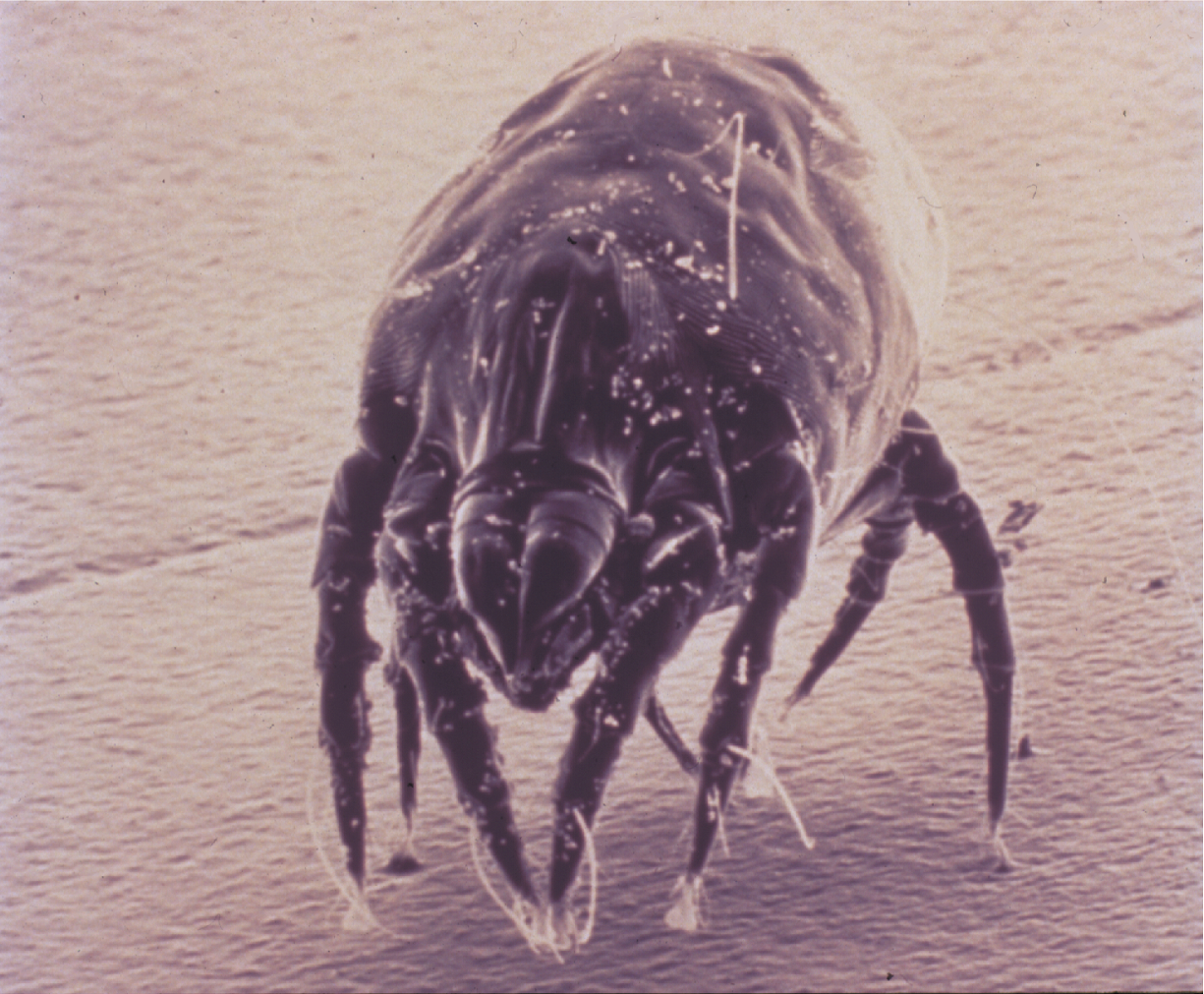
Read more about How To Control Dust Mites and the Harm they do.
Common Sources of Indoor Dust
Sources of indoor dust vary widely. Everyday activities contribute significantly.
For example, cooking, cleaning, and walking around all stir up dust.
Outdoor particles also find their way inside, adding to indoor dust levels. This includes pollen and fine soil particles.
Understanding these sources helps in reducing indoor dust. It aids in selecting effective dust control measures.
How do air purifiers work to remove dust?
Air purifiers remove dust by circulating indoor air through filters. These filters trap dust particles, cleaning the air.
The process begins when the air is drawn into the purifier. It passes through a pre-filter, capturing large particles.
Next, the air flows through more advanced filters, where fine dust is trapped. This multi-stage filtration effectively reduces airborne dust.
Many air purifiers use a fan to pull air through the device. The cleaned air is then blown back into the room.
This continuous cycle ensures a significant reduction in airborne dust. It provides cleaner and fresher air to breathe.
The efficiency of an air purifier depends on its design and technology. Some models offer enhanced features like UV and ioniser for better performance and higher dust extraction rates.
Read more about What does an Air Purifier do, and how do they work on our blog.
Here at Meaco, we have two Air Purifiers available. Each are perfect for different levels of concern, allergies and are optimal for different room sizes.
MeacoClean CA-HEPA 76×5 WiFi Air Purifier
- Great for larger rooms or more severe allergies
- Includes a medical-grade H13 HEPA filter
- Laser-sensor to measure air quality
- Smart Air Purifier: app-enabled
- Shop now
- Great for small rooms or mild allergies
- Compact mode, perfect for a bedside
- Includes an ioniser, H11 HEPA and charcoal filters
- Shop now
The role of HEPA filters in dust removal
HEPA filters are a key component in air purifiers. They are known for their high efficiency in capturing tiny particles. These filters remove 99.97% of particles as small as 0.3 microns. This includes dust, pollen, and even smoke particles.
HEPA stands for High-Efficiency Particulate Air. It represents a standard for filter efficiency in the air treatment industry.
Using a HEPA filter ensures maximum dust removal. This makes air purifiers with HEPA filters ideal for allergy sufferers.
If you want help with severe allergy symptoms, look for medical-grade H13 HEPA filters.
These are the best filters available to purify the air from things like dust. These are available for both our MeacoClean 76×5 Air Purifier and our Arete® combined Dehumidifier and Air Purifiers.
Additional features that enhance dust removal
Some air purifiers offer features that enhance dust removal.
An air purifier with an ioniser and UVC light, such as our MeacoClean 47×5, effectively removes dust and improves air quality. The ioniser puts out negative ions. These ions stick to dust particles. This makes the dust heavier, so it falls down or gets caught by the purifier’s filters.
This reduces airborne dust, helping to keep surfaces cleaner. Meanwhile, UVC light neutralises bacteria, viruses, and allergens by disrupting their DNA, preventing them from spreading.
Together, these technologies enhance indoor air quality by reducing dust and other allergens, as well as harmful microorganisms, making the air healthier to breathe. Ideal for allergy sufferers, this combination ensures a fresher, cleaner, and safer home environment.
The combination of these features enhances the overall effectiveness of air purifiers. They provide a comprehensive approach to cleaner indoor air.
Selecting the right air purifier for dust removal
Choosing the right air purifier for dust control is crucial. The effectiveness varies across models, so choose wisely.
First, consider the area you need to clean. Larger spaces require more powerful purifiers.
Understanding the Clean Air Delivery Rate (CADR) is key. It indicates the volume of filtered air returned to the room.
A higher CADR means better dust removal. It shows the purifier’s efficiency in removing dust, pollen, and smoke.
Filter type also impacts performance. HEPA filters are ideal for dust and allergens.
Look into additional features like activated carbon filters. They help with odours and VOCs, complementing dust removal.
Many air purifiers offer additional features as well like Night Mode, low noise levels and high energy efficiency. Read more on What Air Purifier Should I Buy blog.
Understanding CADR ratings and room size
The Clean Air Delivery Rate (CADR) is an essential metric. It tells you how effectively an air purifier cleans different pollutants.
Different particles have different CADR values. For dust, a higher CADR signifies quicker dust removal.
Room size also matters in selecting the right purifier. Smaller units might not perform well in large rooms. Check the manufacturer’s recommendations for room size. You’ll want to choose the optimal air purifier for the space you have to ensure it’s giving you the performance and air purification you need.
Always cross-check the room dimensions with the purifier’s specifications. Ensuring compatibility is key for effective dust removal.
Read more on What Air Purifier Should I Buy blog, where we talk about the different components of an air purifier and how to match the best air purifier for your home.

The effectiveness of air purifiers in dust removal
All homes will have some dust, that’s inevitable. Air purifiers are very effective at reducing dust. They filter the air and trap fine dust particles. This can help people who are allergic to dust mites. It can also help anyone who wants to breathe cleaner, healthier air.
The effectiveness of the air purifier in your home can vary between models. Some purifiers have better filtration systems than others. And some are better suited to very small spaces or rooms. As we’ve said in this blog, it really comes down to the filters inside of the unit.
But despite their efficiency, no purifier will remove 100% of dust. Some particles will inevitably remain. The presence of dust in the air can be significantly reduced, though. With the right model, you can see noticeable improvements.
“I’m able to breathe much more comfortably than I have for years.” ⭐⭐⭐⭐⭐ – MeacoClean 76×5 customer
In addition to dust, air purifiers often remove other pollutants. This includes allergens, smoke, and pet dander.
Using an air purifier doesn’t eliminate the need for cleaning. Regular dusting and vacuuming remain essential.
To optimise performance, consider combining an air purifier with other dust management strategies.
To understand exactly how your air purifier works when removing dust, visit our What does an Air Purifier do and how to they work.
Real-life success stories and the science of removing dust
Many customers report noticeable reductions in dust levels after using air purifiers, particularly those with HEPA and activated carbon filters. Allergy sufferers frequently experience relief, with cleaner air leading to reduced sneezing, congestion, and irritation.
Don’t just take it from us, it’s all in the science. A study published in Indoor Air found that HEPA air purifiers significantly reduced particulate matter, including dust and allergens, improving overall air quality. Another study in the Journal of Allergy and Clinical Immunology demonstrated that air purifiers lowered airborne dust mite allergens. This hugely benefited individuals with dust-related allergies.
And as we all know, dust really does get everywhere. Offices also benefit from cleaner air, with studies linking improved air quality to enhanced cognitive function and productivity.
This alignment between user experiences and scientific findings underscores the effectiveness of air purifiers in controlling dust and allergens.
Why some rooms remain dusty even with an air purifier
Not all rooms will see the same improvement in dust levels. Some spaces might remain unexpectedly dusty despite using an air purifier. You’ll likely notice it most on high up shelves, corners of carpets and even on your bed’s headboard!
Placement of your air purifier is key. An improperly placed unit won’t clean the air effectively.
- Ensure it’s not blocked by furniture or too far from dust sources. Optimal placement enhances performance. We would recommend putting it in a bedroom if you suffer from allergies so you get a good night’s sleep.
- Ensure you’re using the right filter type. As previously discussed, matching room size to purifier capacity is essential.
- Regular maintenance and clean is vital for your filters to give you the highest performance. Neglected filters can’t trap dust effectively, resulting in reduced performance. Keep your unit and filters as clean as possible by hoovering regularly and replacing filters as needed.
- Rooms with poor ventilation may also pose challenges. Dust can settle faster in rooms with little airflow or use. This could be a storage room in a house or office. Air purifiers can be a great solution in rooms such as these for removing dust and keeping the air and your belongings clean.
To make your air purifier work best for reducing dust, place it in the right spot, use the correct filter, and clean it regularly.
Position the unit in an open space near dust sources, match its capacity to room size, and clean or replace filters as needed. Combining air purification with regular dusting and vacuuming will yield the best results for a cleaner, fresher environment.
How often to replace filters for maximum dust removal
The frequency of filter replacement can greatly affect dust removal efficiency. Ideally, check filters weekly to assess their condition.
In areas with high dust or pollution, replace them more often. We recommend cleaning your filters every week and replacing them when they start to show signs of discolouration – generally, around every 3-6 months.
Our MeacoClean 47×5 Air Purifier has a filter replacement indicator, this is always a handy one to check. It will alert you when it’s time for a replacement, ensuring you’re always at peak efficiency.
Addressing common questions and concerns
When considering air purifiers, many questions arise. These devices promise cleaner air but often raise doubts.
Will an air purifier help with dust allergies and asthma?
Air purifiers are beneficial for those with dust allergies or asthma. They significantly reduce allergens in the air.
The device captures dust mites, pet dander, and pollen that could trigger symptoms. This makes the indoor environment safer for sensitive individuals.
Cleaner air can lead to fewer asthma attacks and allergic reactions. Thus, purifiers contribute to better overall health and comfort.
Are air purifiers a cost-effective solution for dust control?
While there’s an initial investment, the benefits make it worthwhile. Dust is most prevalent in bedrooms.
Cleaner air can mean fewer health issues and reduced cleaning tasks, balancing the costs. With a low running cost of just 1p/ hour (based on 24.5p/ kWh), you know the MeacoClean Air Purifiers will keep your indoor air clean, without breaking the bank.
Here’s a brief checklist for those considering an air purifier to remove dust:
- Evaluate the air purifier’s CADR rating to ensure suitability for room size.
- Check for HEPA filters, essential for allergen control.
- Look for additional features like UVC light if you need dust and germ elimination.
- Assess long-term costs, including replacement filters.
- Consider the noise level if it will be used in sleeping or living areas.
The cost-effectiveness of air purifiers includes initial purchase, electricity use, and filter replacement. Despite these expenses, the benefits can outweigh the costs.
Over time, the health benefits and improved air quality justify the investment. They offer a practical solution for maintaining a healthier home.
Breathing easier with the right air purifier for removing dust
Achieving cleaner air at home involves more than just opening windows or dusting frequently. An effective air purifier plays a crucial role in improving indoor air quality by targeting airborne dust.
Selecting the right air purifier involves understanding your space and personal needs. Features such as HEPA filters and activated carbon layers are essential for comprehensive dust and odor removal.
Air purifiers not only reduce dust but also contribute to overall well-being. They can help lessen allergy symptoms, lower the risk of asthma attacks, and promote a healthier living environment.
Beyond health, an air purifier alleviates the burden of frequent cleaning. Less dust in the air translates to less settling on your surfaces, allowing for a cleaner, more comfortable home.
Moreover, advanced features like smart sensors and multiple speed settings enhance the air purifier’s efficiency. These options allow you to tailor performance to your specific needs, ensuring optimal results.
In summary, investing in a quality air purifier can transform your indoor air quality significantly. With the right device, breathing easier becomes a reality, offering peace of mind and healthier living.
Browse our MeacoClean Air Purifier range, today.
Featured Air Purifiers:
MeacoClean CA-HEPA 76×5 WiFi Air Purifier
- Great for larger rooms or more severe allergies
- Includes a medical-grade H13 HEPA filter
- Laser-sensor to measure air quality
- Smart Air Purifier: app-enabled
- Shop now
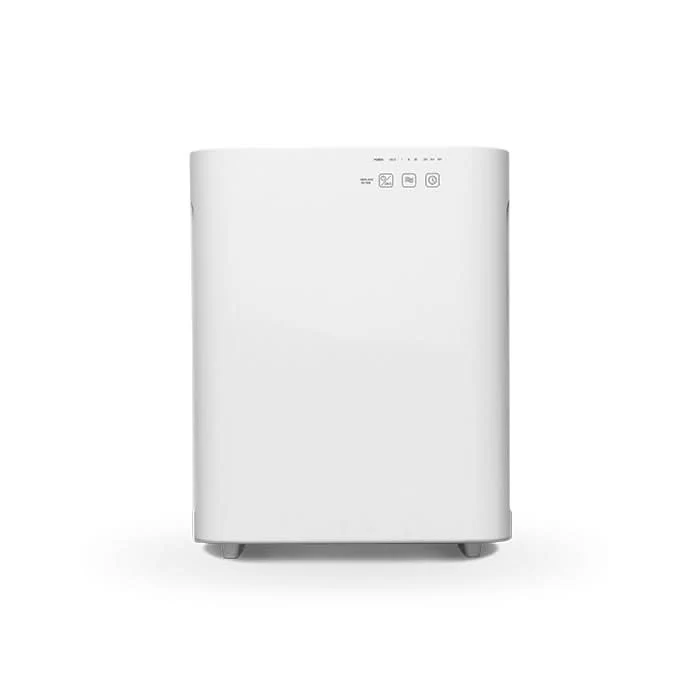
- Great for small rooms or mild allergies
- Compact mode, perfect for a bedside
- Includes an ioniser, H11 HEPA and charcoal filters
- Shop now

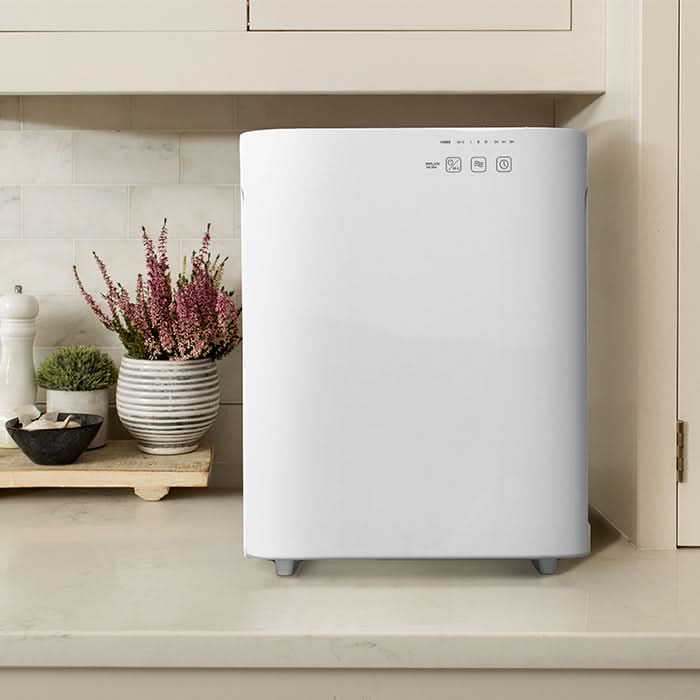
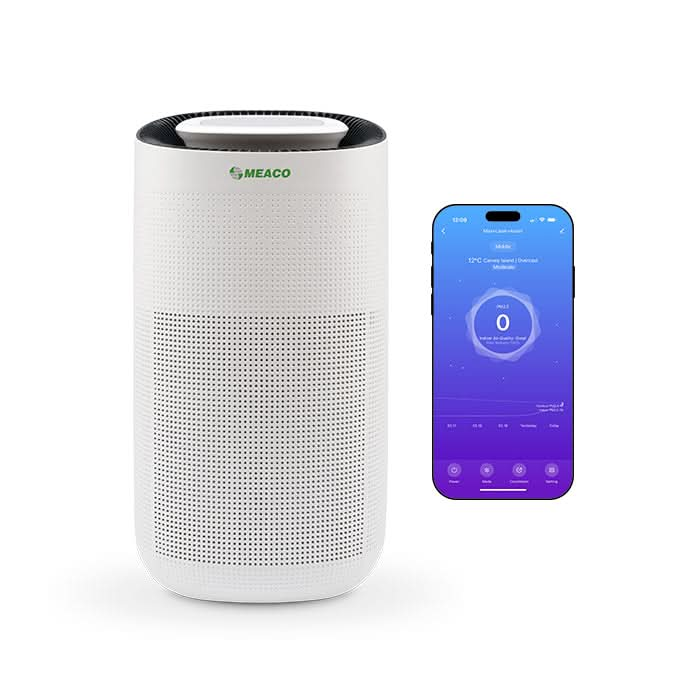

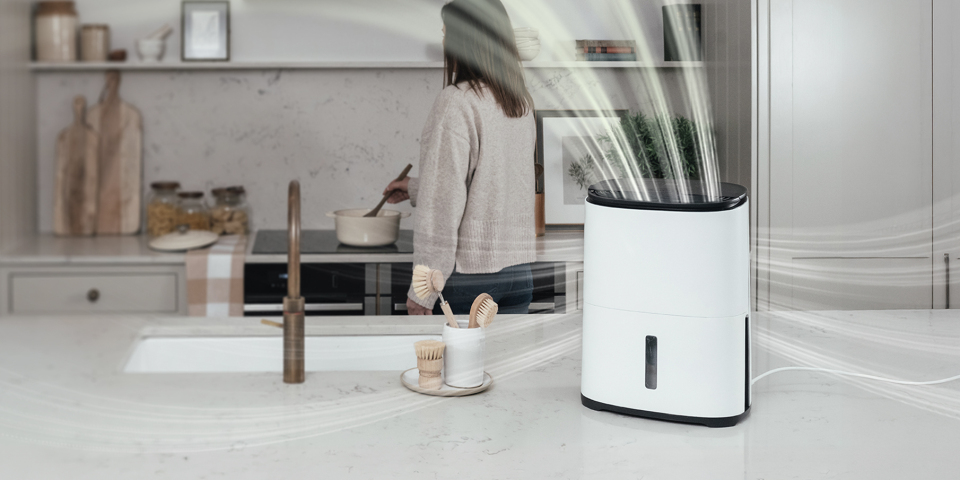
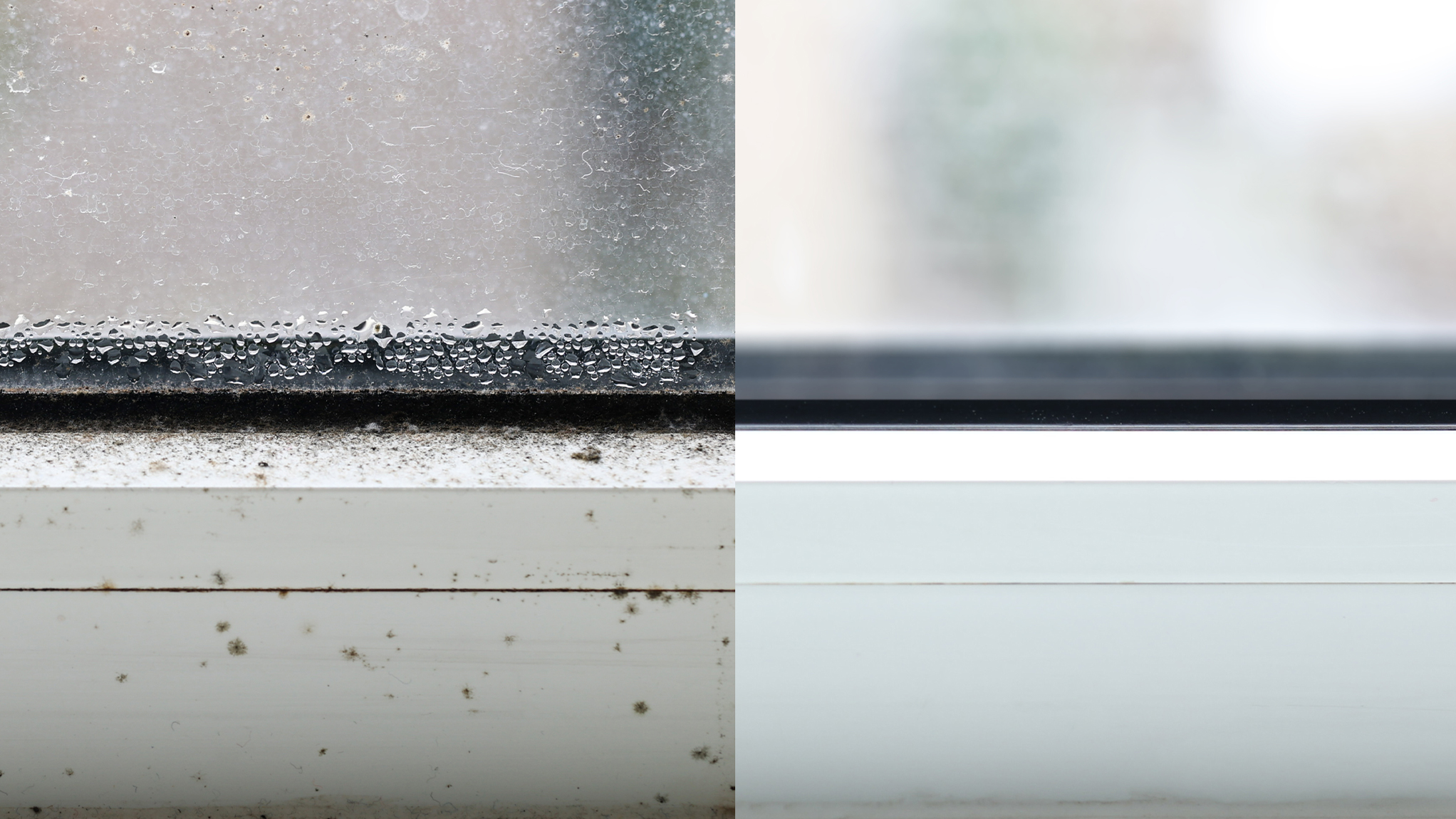

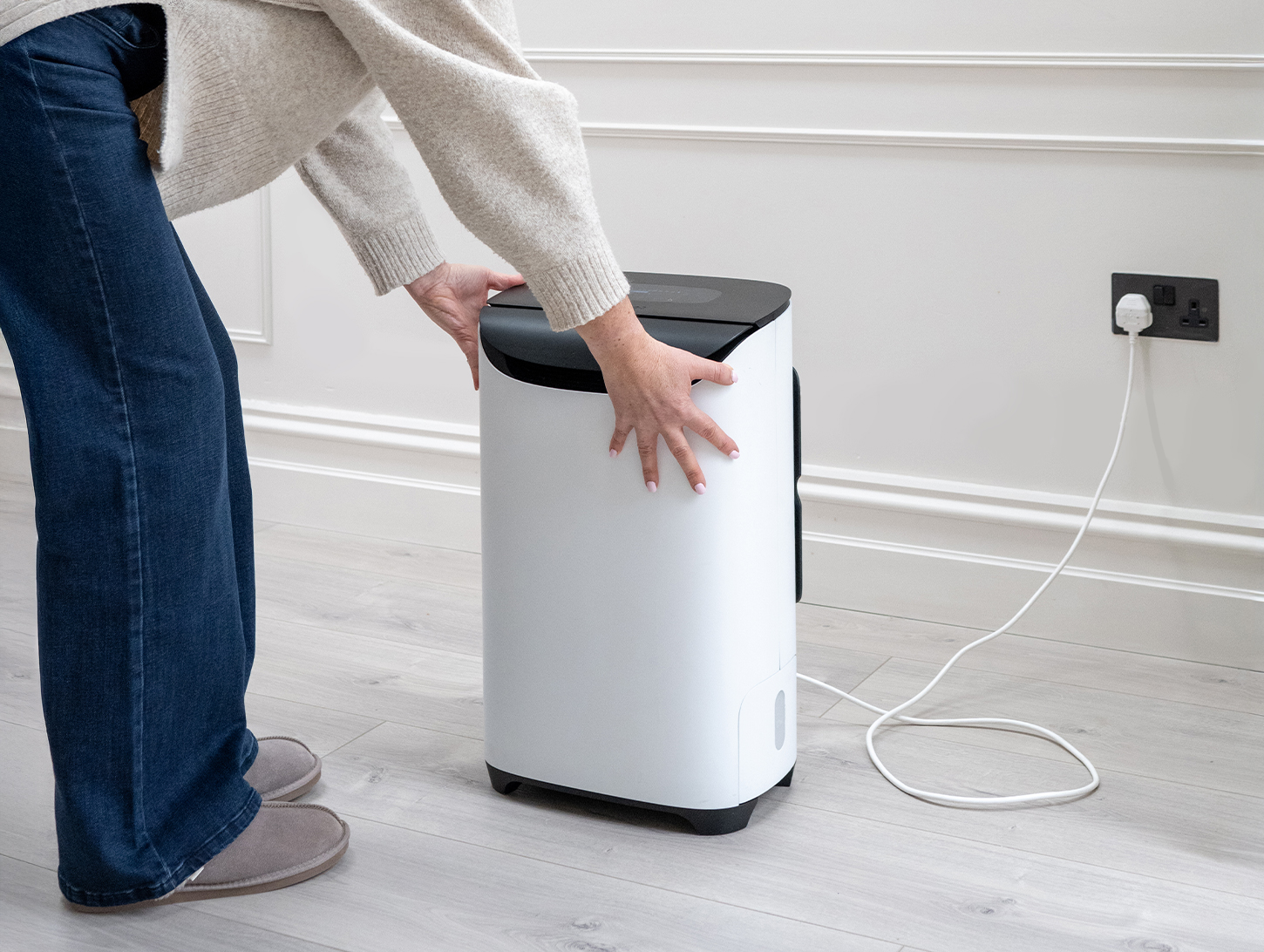
2 responses
Great article! One thing I always point out when talking to clients is that not all air purifiers are created equal—especially when it comes to dust. The HEPA rating, CADR score, and even where you place the unit can make a big difference. As someone who installs HVAC systems daily, I’ve seen how pairing a high-quality purifier with proper filter maintenance dramatically improves indoor air quality. For allergy-prone households, these small tweaks really do make it easier to breathe.
Thanks for your comment, and you’re absolutely right, HEPA rating, CADR score, and placement all play a big part in performance. Great to hear you’re highlighting these points.
Kind regards,
Omar@Meaco